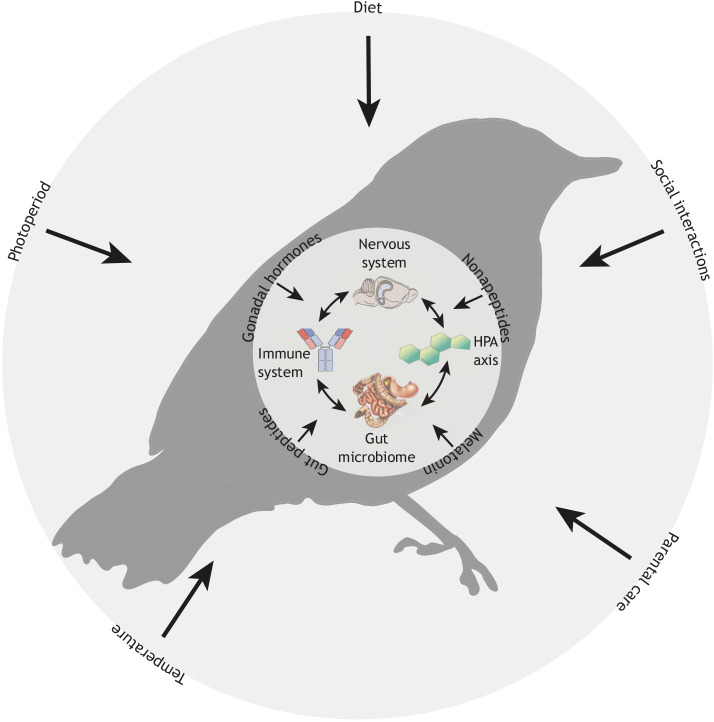Fig. 1.
Graphic model identifying potential interactions among environmental factors and physiological systems that can alter the gut microbiome and thus affect behaviour. The inner circle represents the ‘core’ physiological systems regulating microbiome–behaviour interactions, including immune, neural and endocrine factors (HPA axis, hypothalamic–pituitary–adrenal axis), as well as the direct influence of the gut microbiota itself (i.e. metabolic by-products). Our hypothetical bird is nested within a larger environmental context (represented by the outer circle). Around the outer circle, we show examples of environmental variables – ranging from behavioural interactions with conspecifics to the physical environment – that might affect the microbiome–behaviour interaction. Around the perimeter of the inner circle are additional physiological variables that are less often considered but that might play an important role in modulating the effects of environmental variables on the core physiological systems. In conjunction with environmental factors, these molecules serve as ‘environmental input signals’ to the organism. These signals include (but are not limited to) seasonal/photoperiodic information (via melatonin and thyroid hormones), ambient temperature (via thyroid hormones and gonadal steroids), diet and food intake (via gut peptides such as leptin, insulin and ghrelin) and social interactions (via nonapeptides such as oxytocin and vasopressin, and other hormones).

